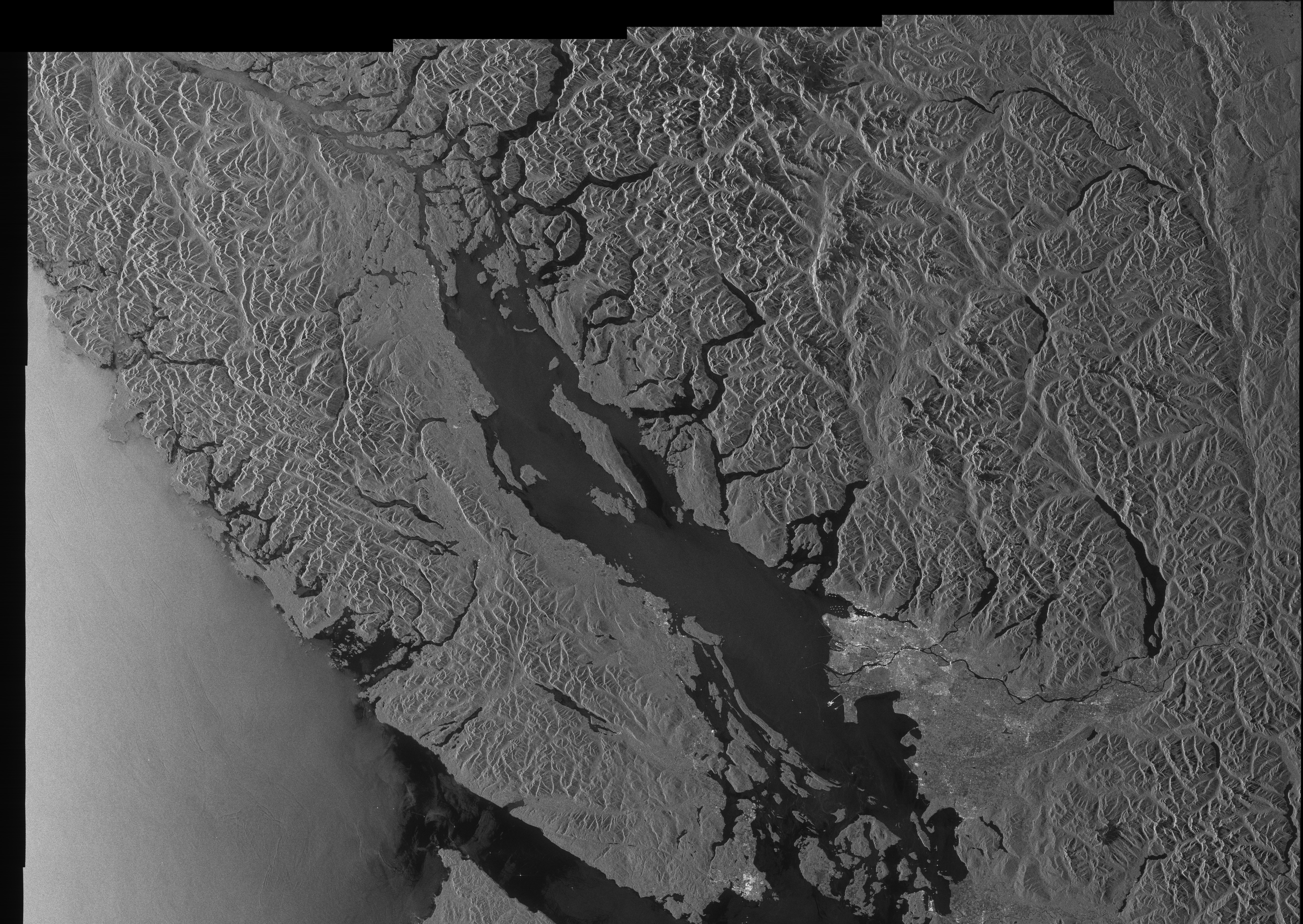
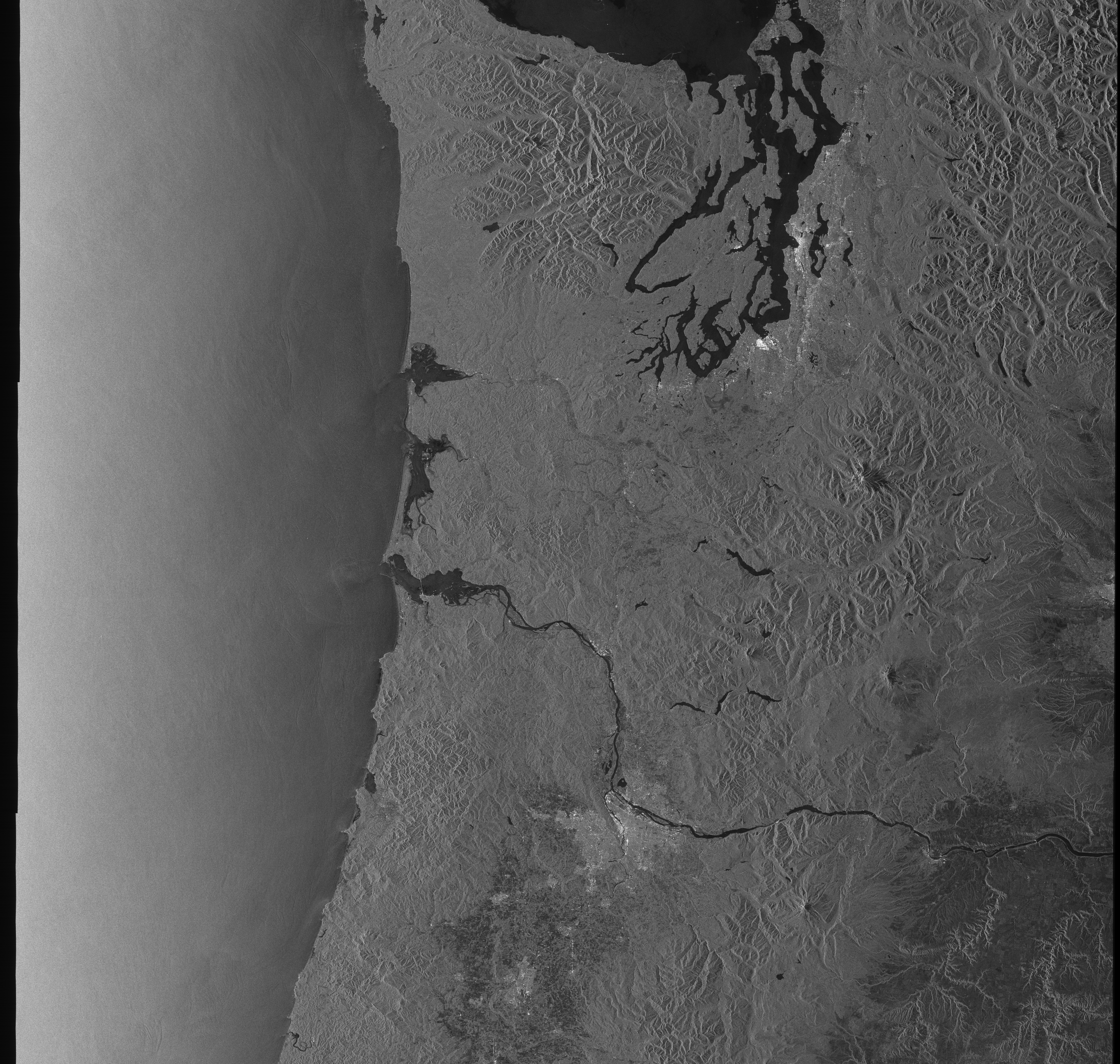
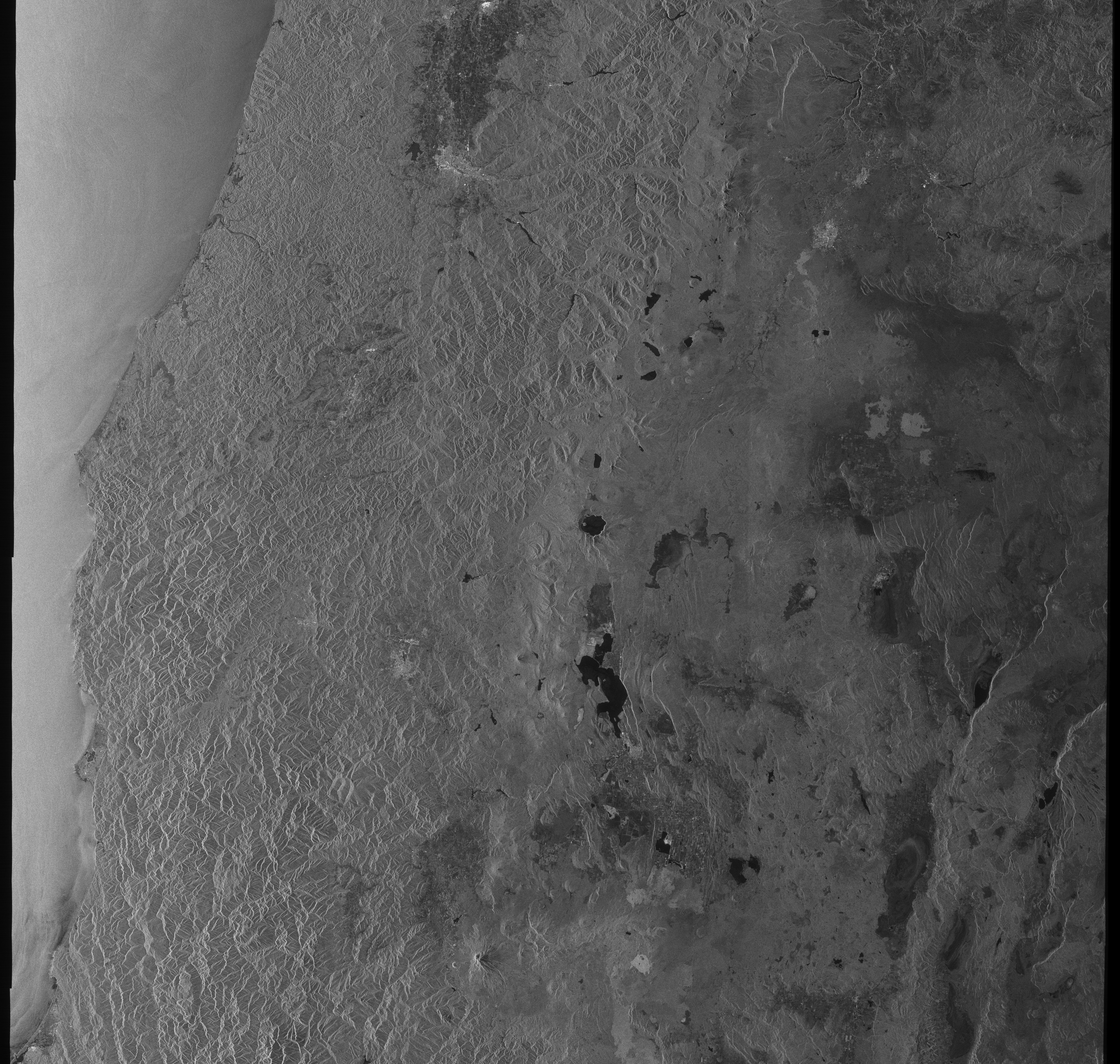
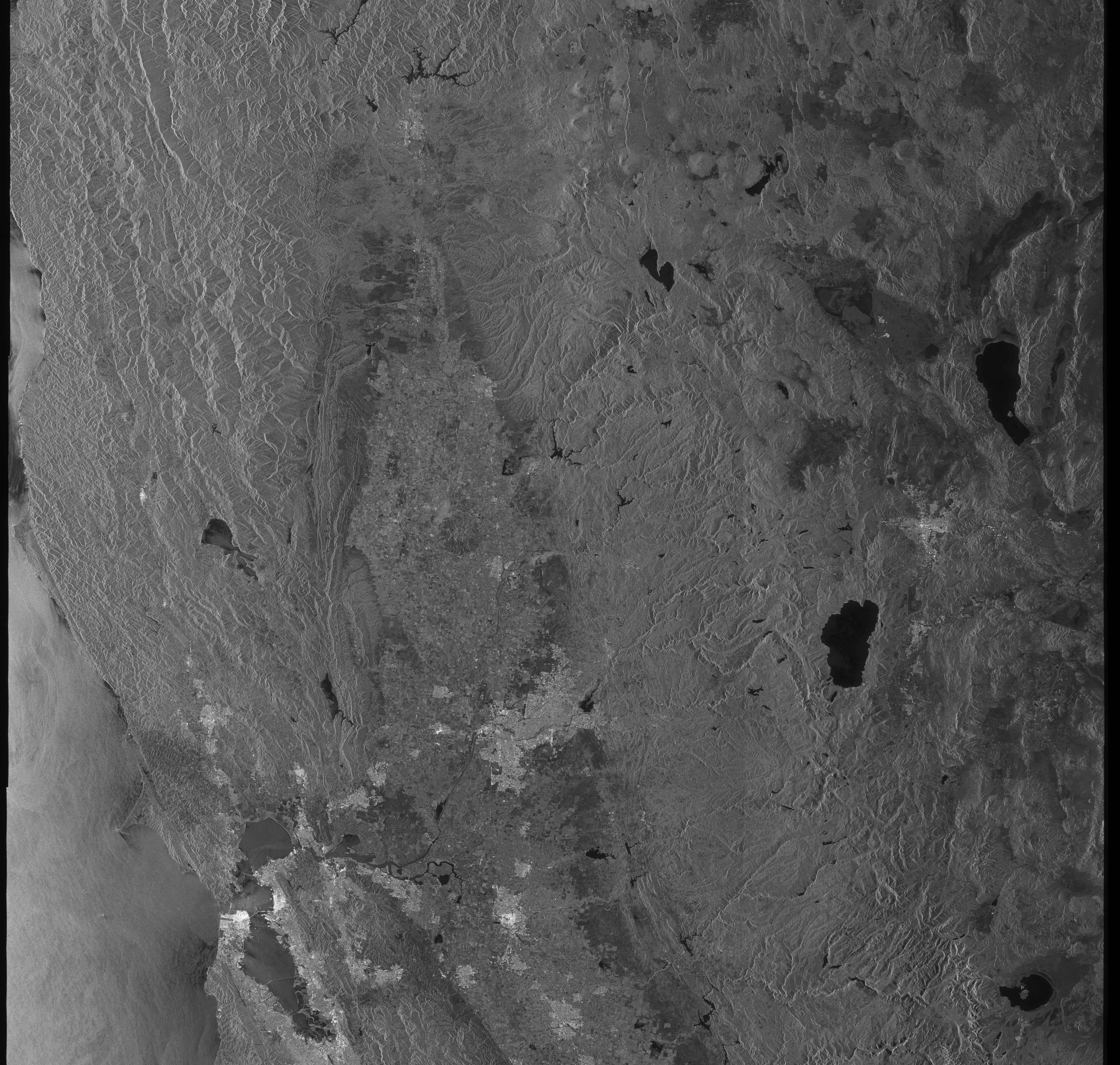
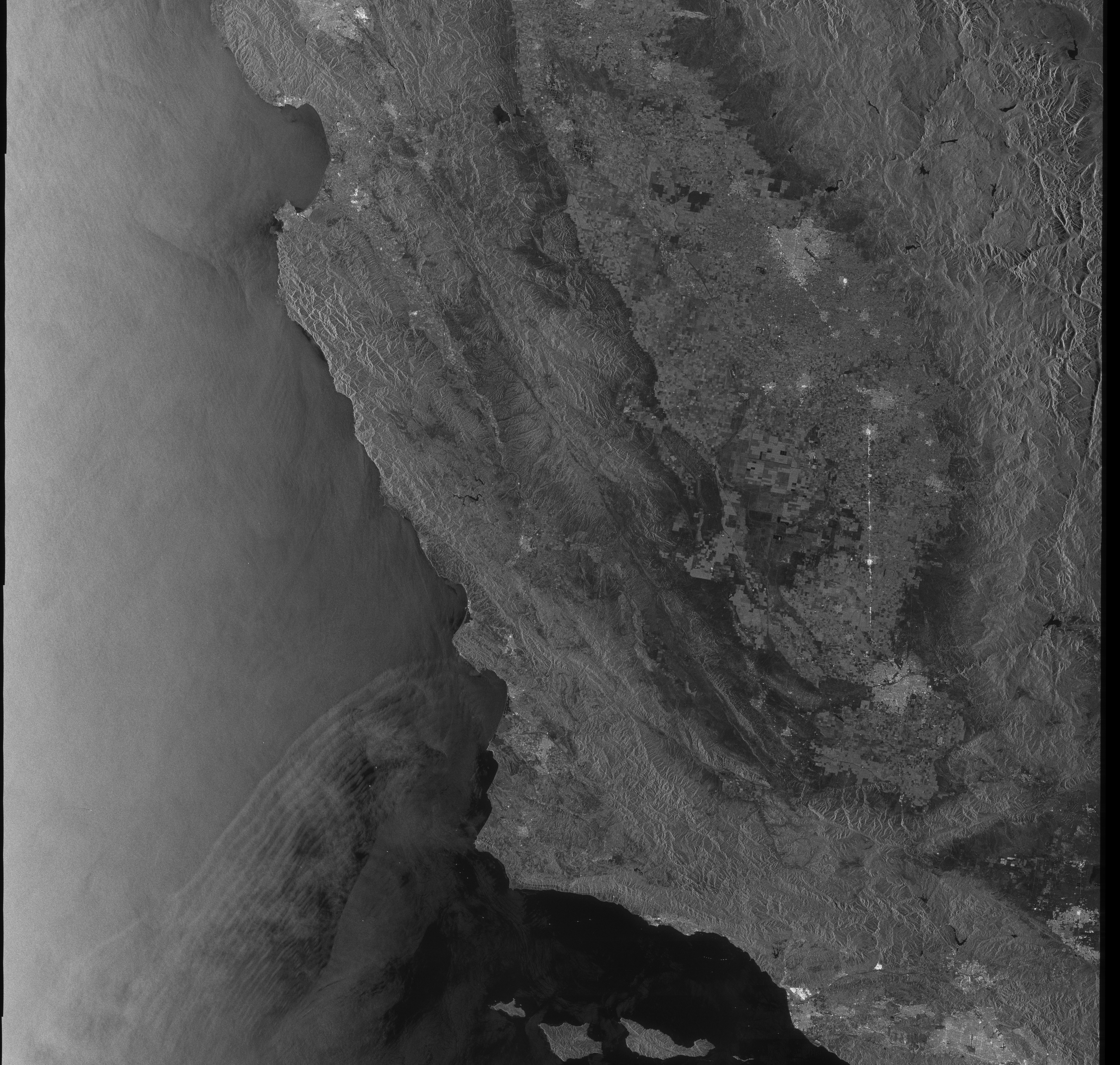
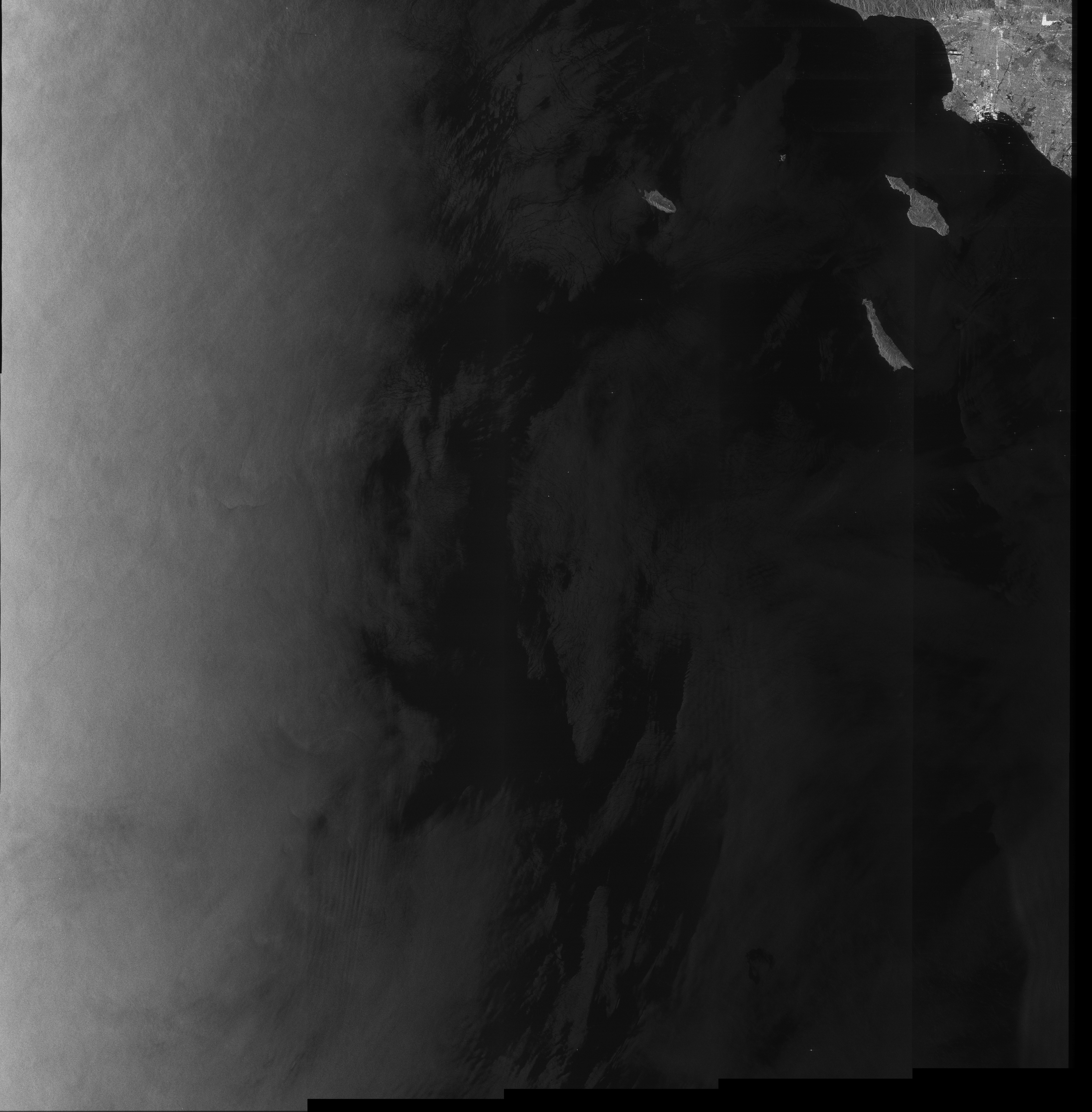
On September 28, 2016, between 6:56 and 7:01 p.m. local time, the synthetic aperture radar satellite Sentinel-1B took in an unusually wide swath of observations in orbit from Southern California to northern Vancouver Island. This is a light annotation of that data.
Sentinel-1B failed in late 2021, but its twin, Sentinel-1A, is still operating. They are part of the Copernicus satellite program of the European Union.
Synthetic aperture radar works on completely different principles from most familiar photography, even from satellites. It is more closely related to side-scan sonar than to a phone camera.
This was written over the weekend of the eclipse in October 2023 by Charlie Loyd. It is beta quality and is only expected to work, if at all, in desktop browsers. It uses a lot of resources. Here are some implementation notes.
Place names are not normative; they are provided only for context.
Fullscreen this page and scroll up and to the right. If you only have a scroll wheel, try holding shift while scrolling in most browsers.